Imagine if the gas you put in your car caused your engine to degrade and polluted the streets and rising prices raised the cost of every product, and the oil companies and car companies just shrugged and said ‘that’s how it is, man, oh well.’
You might be saying, “Yeah, they actually do that stuff right now and have for decades,” and that’s kind of my point.
In healthcare, electronics, fashion – in just about every modern capitalist industry – the rush to get your product to your door, as cheaply and profitably as possible, generally also causes longer term problems for everyone along the way, from getting the resource out of the ground to getting it processed, sold, and delivered. From medicines that make you sicker with side effects to garments and electronics that are more or less disposable and require absurd amounts of raw materials to produce, capitalism goes from fruitful to exploitative in a generation, in a race to the bottom with no end.
That can continue for decades sometimes, until those industries are confronted by new players who bring innovative solutions to the fore. And when those innovative solutions become real, and scale up, like electric vehicles are currently, they inevitably take over the legacy industry and burn it down… if they can break through to the mainstream.
FROM AGRICULTURE TO MONOCULTURE:
Food production is no different. Back in the day, you planted a seed, watered it, and harvested it, then planted something different to give the land some time to recover, but modern farming is a massively broken system where massive amounts of energy and water and chemicals are used to crank out as high a yield as possible from every square foot of land, with a single product, until that intensive process basically burns the land out.
Take fertilizer as an example. Currently, synthetic fertilizers are the norm. Less expensive than organic, readily available, and as productive land degrades, more and more of it is needed to just get baseline productivity out of it.
Synthetic fertilizer has problems:
- Soil Degradation: Continuous use depletes soil health and fertility, requiring more fertilizer to get by.
- Chemical Runoff: Leads to water pollution, affecting aquatic life, biodiversity, and water table quality.
- High Energy Consumption: Synthesis and transport of synthetic fertilizers are extremely energy-intensive.
- Greenhouse Gas Emissions: Production processes and use of the product contribute significantly to CO2 and N2O emissions.
- Nutrient Imbalance: Can lead to over-fertilization, harming plants and soil microbiome and leading to algae blooms.
- Dependency: Creates a cycle of reliance on chemical inputs for crop production, and drives up costs.
- Cost: High and volatile prices can be financially burdensome for farmers and drive up food prices.
- Missing in action: The synthetic fertilizer process loses critical nutrients like iron, calcium, magnesium, and boron.
Conundrum! Fertilizer sucks. Also fertilizer is more necessary, the more you use.
What the global agricultural industry needs is a better way, but there’s no incentive for the massive chemical companies to kill their golden goose by fixing the problems.
ENTER REPLENISH NUTRIENTS:
“Replenish Nutrients products provide a balanced mix of macro and micro nutrients in their pure form. They are manufactured without using chemicals or creating waste, and harness the principles of biochemistry by using biologicals and organic matter to enhance soil health and the resulting efficacy of nutrient absorption and natural defenses to pests and disease.”
Yeah, I know, sounds like something you’d buy in a bucket at the farmer’s market to sprinkle on your roses, but Replenish isn’t going for the patchouli crowd, and for a very good reason…
Their products, while better than conventional synthetics in a multitude of ways, aren’t priced absurdly higher accordingly. Their model is to see farms use their product instead of the traditional options not just because they’re better but because, in the long term, THEY’RE CHEAPER AND BRING HIGHER YIELDS.
HOW DOES IT WORK?
“Using the micronized form of key soil and plant nutrients combined with diverting organic and biological waste recreates the natural biological processes and microorganisms in soil that break down the essential nutrients in a timely manner for plants to absorb throughout their lifecycle and maximize their yield and nutrient density potential. Independent field trials have demonstrated that Replenish products provide equivalent or better yields than existing conventional synthetic products.”
Replenish’ innovative approach includes the development of proprietary formulas that provide essential nutrients to crops while supporting the soil’s natural processes. This method promotes a more sustainable form of agriculture by reducing reliance on synthetic fertilizers, improving plant nutrient uptake, and fostering a healthier farm ecosystem. Their technology is designed not only to benefit the immediate crop yield but also to ensure long-term soil vitality and sustainability.
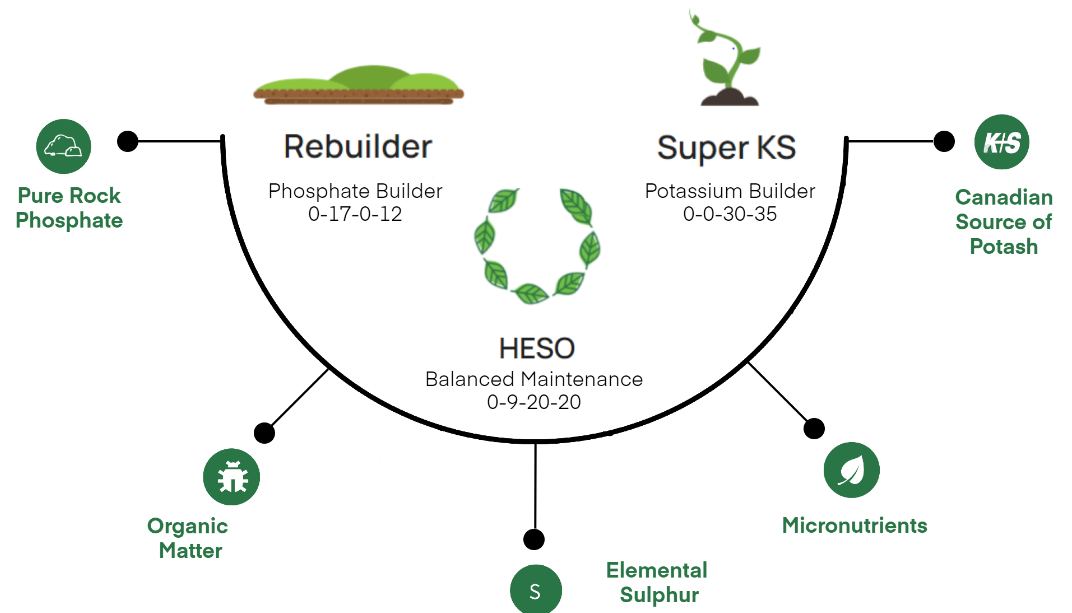
WHY IS REPLENISH BETTER?
- Soil Health Improvement: Enhances soil structure and function, promoting long-term fertility and biodiversity which lessens the need for chemical intervention and leaving fields fallow.
- Reduced Chemical Use: Minimizes reliance on synthetic fertilizers, reducing environmental pollution and potential harm to beneficial soil organisms.
- Increased Crop Yield: Delivers essential nutrients efficiently, supporting healthier plants and potentially higher yields.
- Sustainability: Focuses on regenerative practices that sustain and enhance natural resources rather than depleting them.
- Regenerative Practices: Supports a cycle of regeneration for the soil, contributing to ecosystem resilience.
- Flexibility: Utilizes proprietary technology to create unique fertilizer blends tailored to specific soil and crop needs, offering a cutting-edge solution for modern agriculture, rather than one size fits all options.
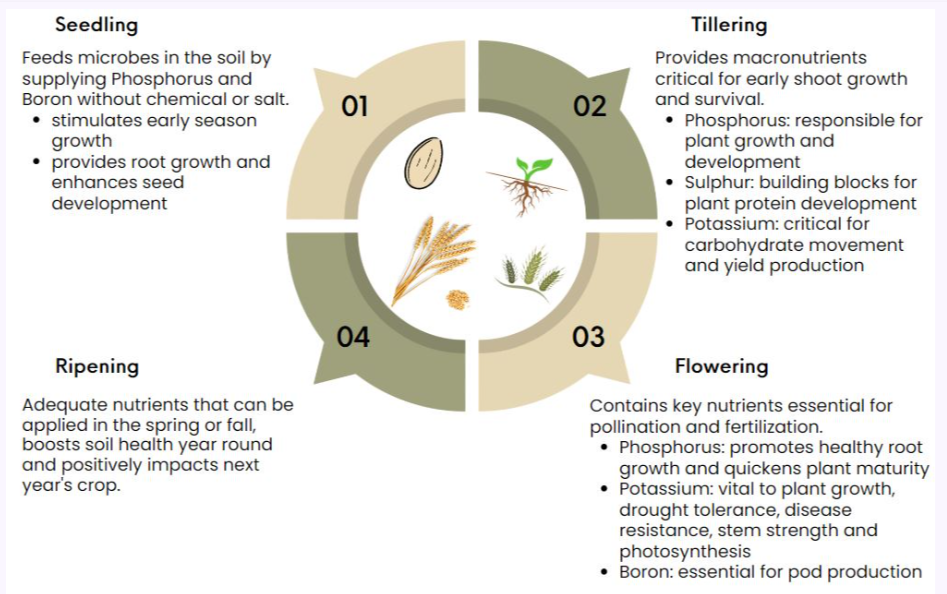
WHY IS REPLENISH CHEAPER?
Because it can lower long-term costs for farmers by improving soil health, which reduces the need for chemical inputs and, over time, improves yields. If fields can continue to be planted without having to be left fallow, farms can maximize revenue. And if healkthier ecosystems are more resilient to disease and pests, time, labour, and costs to mitigate those issues are greatly lessened.
Cheaper doesn’t mean less profitable for Replenish: The Western Canadian fertilizer market alone is an $8.8 billion behemoth, and the US market is as much as 10x that of Canada. The rest of the world isn’t far behind.
For now, Replenish has expanded across half of Canada and into the northwest US, and continues to grow, with $20m of existing sales in a balance of direct-to-farm and to large distribution groups, with $9m in grants and research awards given to the company by government funded bodies thus far.
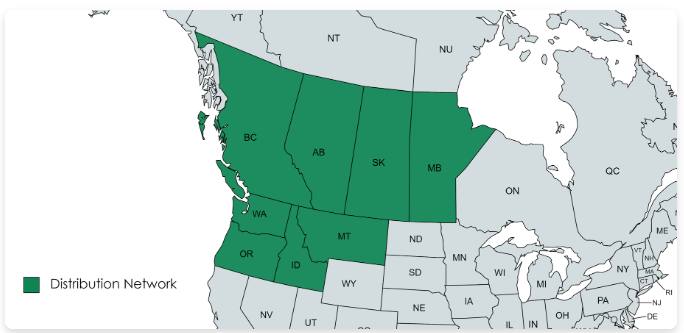
LET’S TALK ABOUT SCALE:
Growth is predicated on being able to satisfay higher demand, so Replenish is currently working out of a research facility in Beiseker AB, with another on the way in Deboit AB, and another still in Bethune SK after that. That Bethune facility will be the big step, being as it will be located on a large Saskatchewan potash mine site, with a production capacity of 200,000 MTs, compared to 20,000 coming out of Beiseker currently.
To allow for larger steps up, the company is engaging in licensing deals with potential partners, and evaluating M&A targets.
SO WHY ISNT THE STOCK EXPLODING?
Because this is a plan that has taken five years of research and development to get fifty feet past the starting line.
Agricultural R&D isn’t the hot sector any time in Canada, and the early business model here, under the name EarthRenew, had some elements that, over time, became less important than others. There was an angle to produce energy from production waste, there have been advances in proprietary tech that showed themselves later in the game, and all of that took time to work through.
But the company has finally got itself to a place where all the oars are going full speed ahead, the model is laid out, the process fine tuned, and the product going out the door to customers..
This might not be the moment – today – but that day is coming rapidly as the balance sheet moves nearer to break even, the facilities that will allow growth spikes begin construction, and more end users try – and become believers in – the product itself.
At just $10 million in market cap currently, you’re buying stock for substantially less than the amount of money that’s been invested to date – in fact, barely more than what the government has put into it in grants – as the growth curve begins to hockey stick.
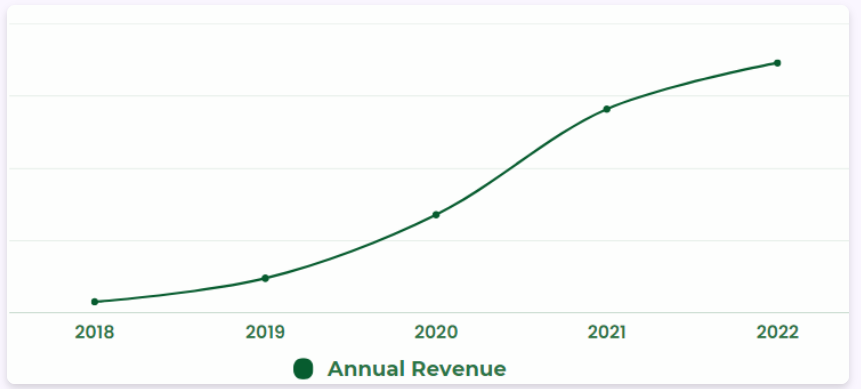
I’m not the kind of guy that’s going to tell his audience to BUY BUY BUY, because that’s not my game. That’s the sort of decision you have to make yourself with the assistance of your partner, your financial advisor, and your god and, besides, the company hasn’t exactly been pounding out news releases to engage in over-hype.
But I am the kind of guy who’ll point out that folks said this one was going to fail five years ago, and four, and three, and not only did it not, but the research done since has positioned the company in a very interesting place right now, where it’s undervalued and hitting an inflection point, where the next big news to come should be game changing.
An innovative company fueling a sector that’s been struggling to be environmentally solid as prices rise and climate changes, ready to ramp up production and sales, backed by government, and with research backing its claims?
That just seems like where I want to be.
— Chris Parry
FULL DISCLOSURE: We have no comnmercial agreement with Replenish nor do we own the stock but may buy on the open market and we do have commercial arrangements with insiders, so please consider us conflicted and, as we said, do yur own due diligence.

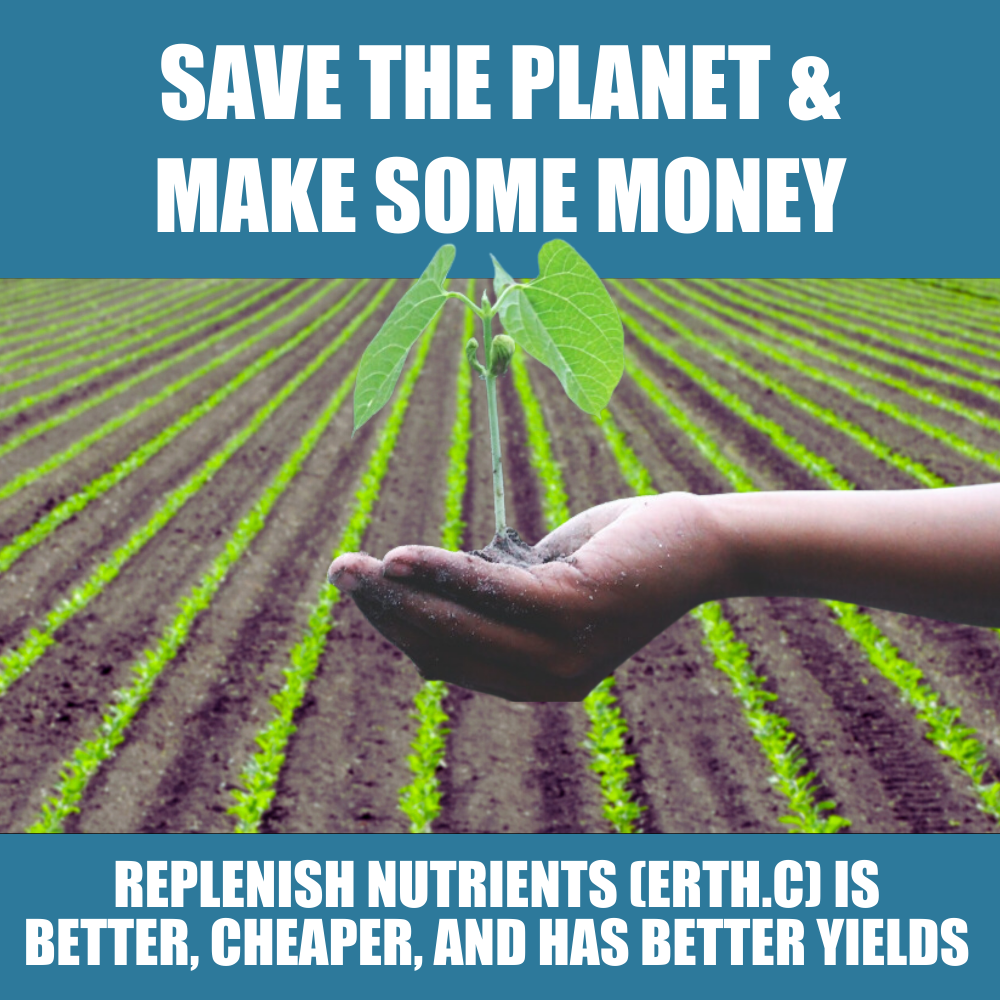
Leave a Reply